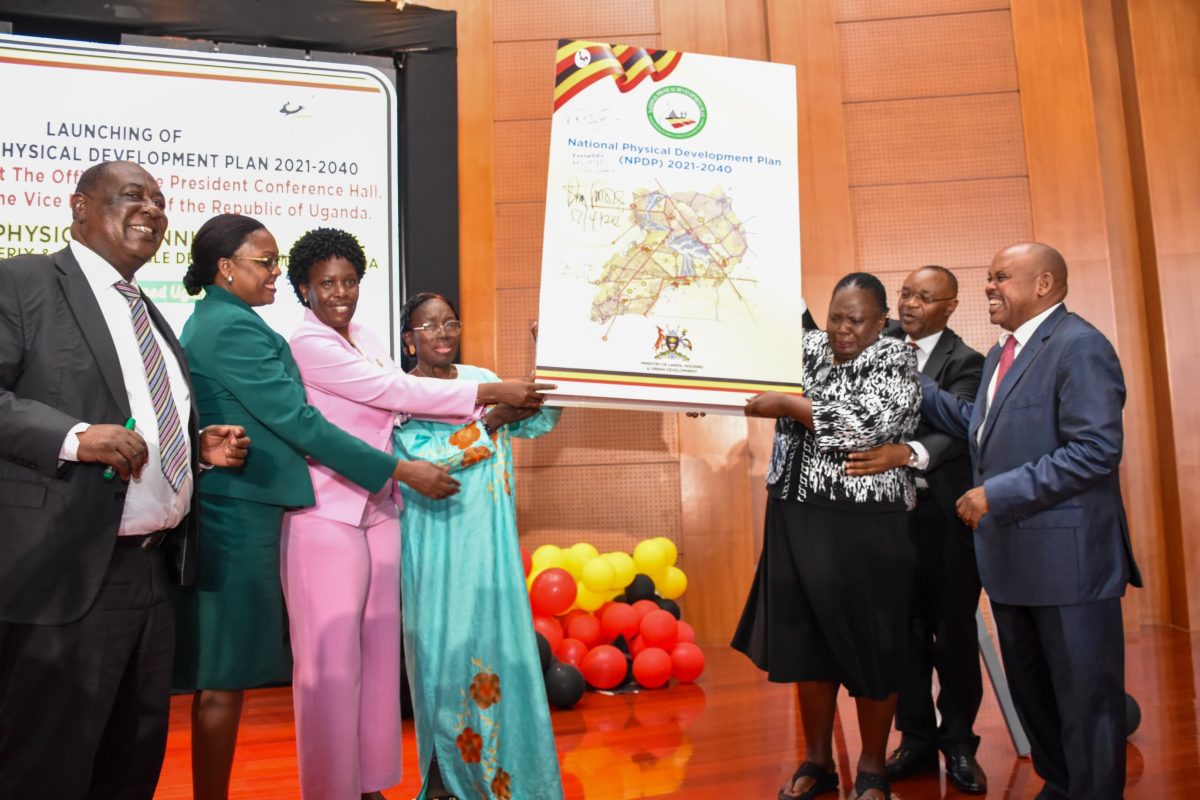Uganda has reached a historic milestone with the introduction of its inaugural National Physical Development Plan, marking a significant stride towards efficient land resource management.
The Ministry of Lands proudly presented the plan, underscoring its pivotal role in steering the country towards industrialization and achieving middle-income status.
During the ceremony attended by government officials and community leaders, Hon. Judith Nabakooba the State Minister of State for Urban Development emphasized the critical significance of land utilization in Uganda’s development journey.
“With land being a finite resource crucial for production, the National Physical Development Plan emerges as a guiding light for strategic planning and sustainable growth,” Nabakooba highlighted.
The absence of a comprehensive framework for land utilization has been a notable gap in Uganda’s development landscape. Despite recent efforts to elevate urban centers to regional cities, the lack of a cohesive plan has hindered effective land management. The newly unveiled plan aims to address this issue, offering clear directives for urbanization and rural development alike.
As Uganda undergoes rapid urbanization, with the urban population expected to double by 2040, the need for coordinated planning has never been more urgent. The plan outlines strategies for various sectors, including agriculture and housing, with a focus on commercialization and efficient land use.
In agriculture, the plan advocates for transport corridors and customized crop selection based on soil analysis to enhance productivity. Meanwhile, for housing, it suggests transitioning towards high-rise developments in urban centers to accommodate the growing population within limited land boundaries.
Moreover, the plan extends its focus to rural areas, aiming to enhance infrastructure and essential services in consolidated villages. By promoting sustainable land use practices, the plan seeks to maximize economic benefits for current and future generations while safeguarding natural resources and addressing climate change challenges.
The launch event witnessed active participation from local government leaders, highlighting their pivotal role in plan implementation.
With only a handful of African countries possessing a similar framework, Uganda celebrates a significant milestone in its development journey and commits to diligent execution and coordination across all governance levels.
About the NPDP
The Government of Uganda has secured financing from the International Development Association to bolster its National Physical Development Plan. Uganda’s forward-thinking approach places it among the few African nations with a comprehensive spatial strategy, approved under Minute 407(CT 2023) in November 2023 and officially gazetted on 13th November 2023.
This plan fills a crucial gap in Uganda’s national planning framework, focusing on the strategic positioning of cities, infrastructure development, and sustainable land use. With Uganda’s land resources fixed and demand perpetually rising, the National Physical Development Plan becomes instrumental in optimizing land usage and resource management.
Aligned with the ambitious Vision 2040, the NPDP aims to transition Uganda into a competitive, middle-income, and modern industrialized nation. Key objectives include enhancing agricultural productivity, promoting industrial growth, fostering urban prosperity, and preserving natural resources.
The development of the NPDP was a collaborative effort involving various stakeholders, including government bodies, private sector entities, media, academia, and the general public. This inclusive approach ensures the plan’s relevance and effectiveness in addressing the country’s development challenges.
Key Components of the NPDP
The NPDP provides a comprehensive framework for the allocation, utilization, and management of Uganda’s land and physical resources. It outlines strategies for infrastructure development, urban planning, and environmental conservation, emphasizing the integration of spatial considerations into national development policies.
The plan envisions sustainable economic growth, social equity, and inclusive development, aiming to maximize the economic benefits of land and resources for present and future generations. By adopting market-oriented approaches, promoting public-private partnerships, and ensuring equitable access to resources, the NPDP seeks to foster balanced and resilient development across the country.
Implementation and Coordination
Implementation of the NPDP will require concerted efforts from government programs, development partners, NGOs, and civil society organizations. The Ministry of Lands, Housing, and U
In conclusion, the Ministry expressed gratitude to His Excellency the President for his steadfast support and urged continued collaboration in realizing Uganda’s development goals.

